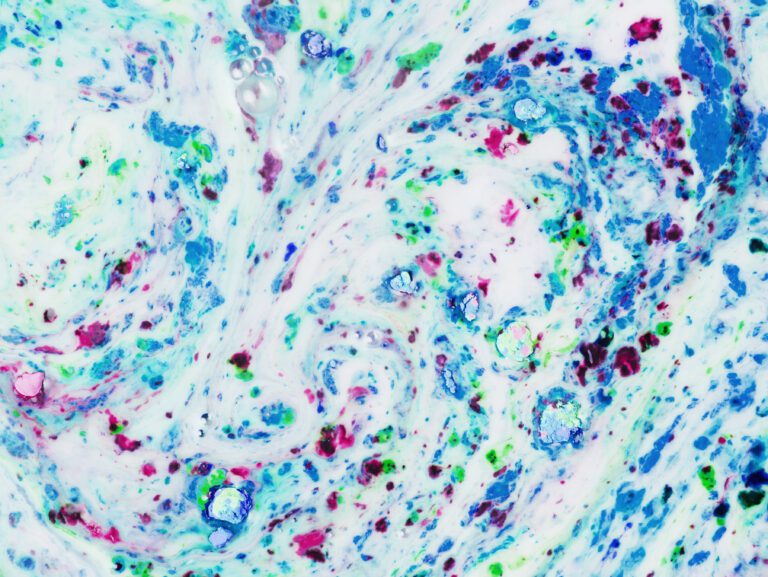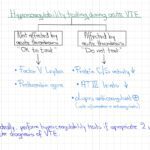
Anemias are among the most common medical conditions in hematology. There are many different types of anemias and ways to classify them according to the red blood cell (RBC) size, hemoglobin content or RBC color, and whether the bone marrow adequately responds to the degree of anemia. In this post, we will discuss the causes and classifications of the different types of anemias by dividing them into hypoproliferative or hyperproliferative anemias depending on the bone marrow response. We aim to provide the “whole picture” of all the anemias and their classification. It is essential to see the full picture of anemias to understand their complexities and interconnections. As with the famous example of looking at the “entire elephant” rather than just one of its parts, knowing the different types of anemia and identifying where a patient’s anemia fits is crucial.

Here is an outline for this post:
Classifying Anemias by Bone Marrow Response

One of the most helpful ways to classify anemias in clinical practice is to assess the degree of proliferation or response of the bone marrow to a decreased hemoglobin. The most important tool to consider is the reticulocyte index or as we like to call it the “bone marrow stress test.” Hypoproliferative anemias occur mostly in nutritional deficiencies and bone marrow failure syndromes, while hyperproliferative anemias occur mostly in bleeding and hemolysis (as the bone marrow reacts briskly). The reticulocyte index can be calculated manually or estimated by using an online tool such as MDCalc. Here is a summary of the formula and interpretation of the reticulocyte index:
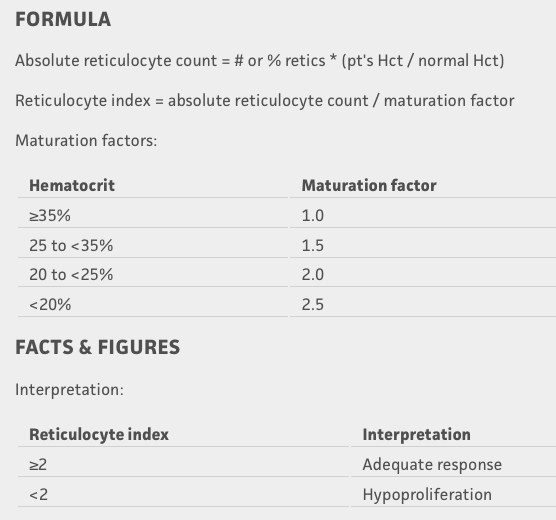
After calculating the reticulocyte index, anemias can be classified into hypoproliferative and hyperproliferative depending on the reticulocyte index as seen above. An index below 2 shows hypoproliferation and above 2 indicates adequate response or hyperproliferation.
Hypoproliferative Anemias
In normal circumstances, the bone marrow responds to anemia by producing more red blood cells to compensate. However, when the bone marrow lacks the building blocks for the creation of RBCs (for example, iron) it cannot produce as many RBCs as it would in normal conditions. Furthermore, if the bone marrow is diseased such as in myelodysplastic syndrome, it cannot fully respond to anemia. These are the two main groups in which we commonly see hypoproliferative anemias in clinical practice.
Using the Mean Corpuscular Volume (MCV) to Subclassify the Hypoproliferative Anemias
The mean corpuscular volume or MCV is the measurement of the average volume (size) of red blood cells. It is calculated by dividing the hematocrit by the RBC count. The MCV helps classify anemias as microcytic (<80 μm 3), normocytic (80-100), or macrocytic (>100), providing clues to the underlying cause.
Microcytic Anemias
Microcytic anemias have a low MCV (usually below 80 μm 3). The most common cause of microcytic anemias is iron deficiency. However, other microcytic anemias include hemoglobinopathies (e.g. thalassemias), sideroblastic anemias, and others as seen below:
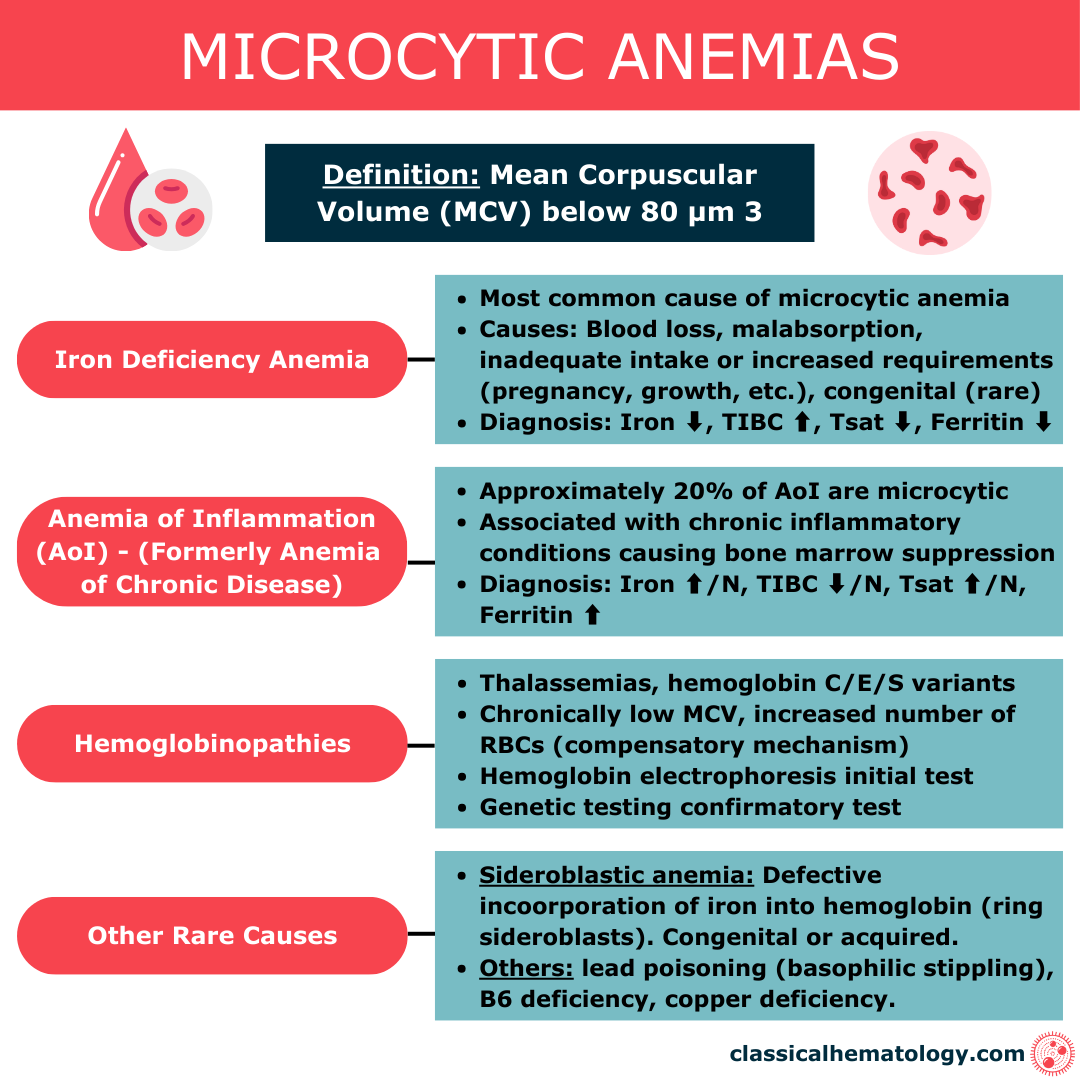
Normocytic Anemias
A normocytic anemia is characterized by as normal MCV (normocytic 80-100 μm 3). There are many causes of normocytic anemias as seen in the figure below:
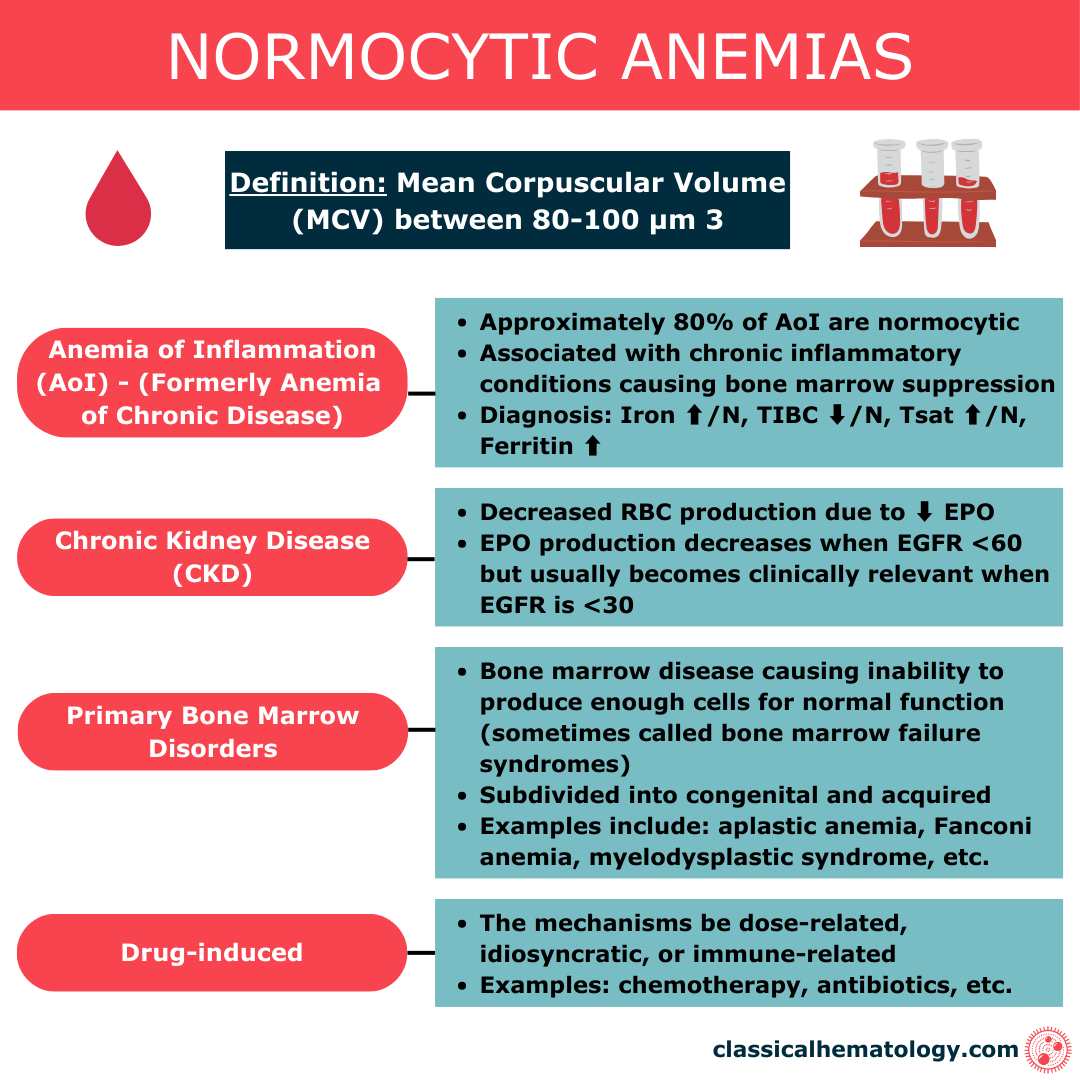
Macrocytic Anemias
Macrocytic anemias occur when the MCV is elevated (>100 μm 3). The term megaloblastic anemia is used to describe certain macrocytic anemias in which abnormal cell division in erythrocyte precursos causes RBCs to increase in size (one of the most common examples is vitamin B12 deficiency). Here is a figure with the classification of macrocytic anemias:
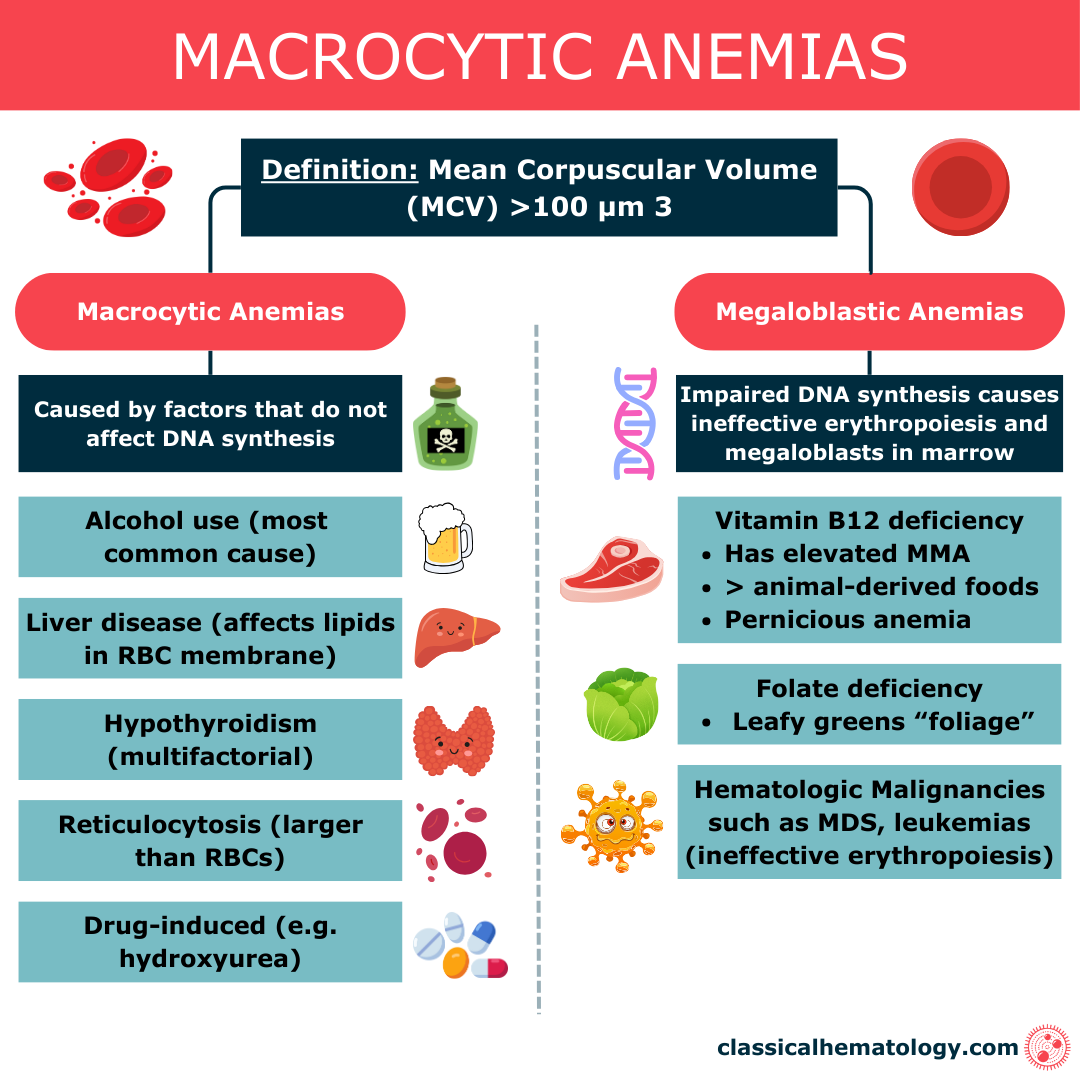
Hyperproliferative Anemias
Hyperproliferative anemias refer to an expected response from the bone marrow to anemia. Usually, it occurs when there is loss of red blood cells. Increased destruction of red blood cells or hemolysis can cause anemia when the bone marrow cannot compensate and maintain normal values of hemoglobin and RBCs in blood. Blood loss can cause anemia when the loss is not compensated by the bone marrow. Therefore, these are the two most common causes of a hyperproliferative anemia. The classification is described below:
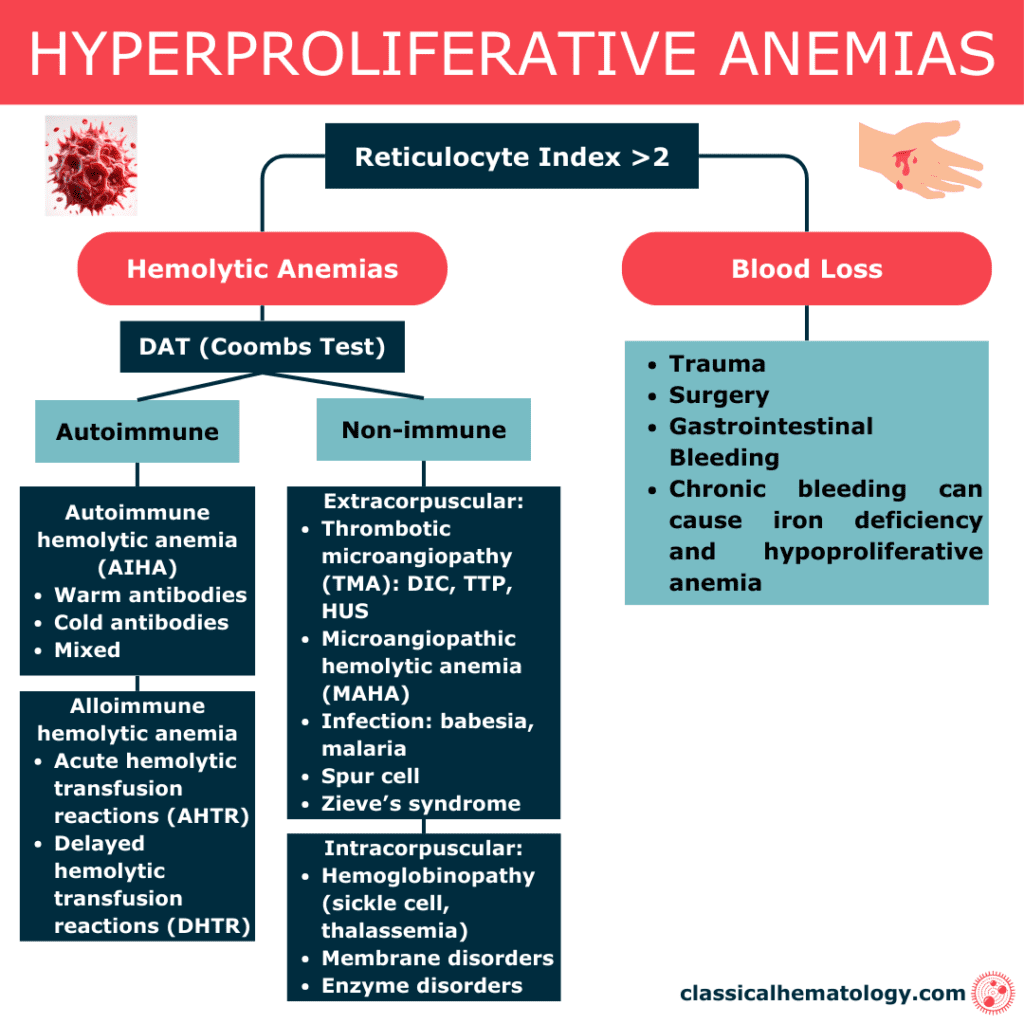
The classification of anemias can be quite extensive and requires an organized approach to the diagnosis and management. We will discuss each anemia in future posts. Please, use our “curriculum” to guide you through the educational materials available.
We hope you enjoyed this post! Please, leave us any comments or questions below. Rate our post using the star system below if your time allows. Thank you for reading!

